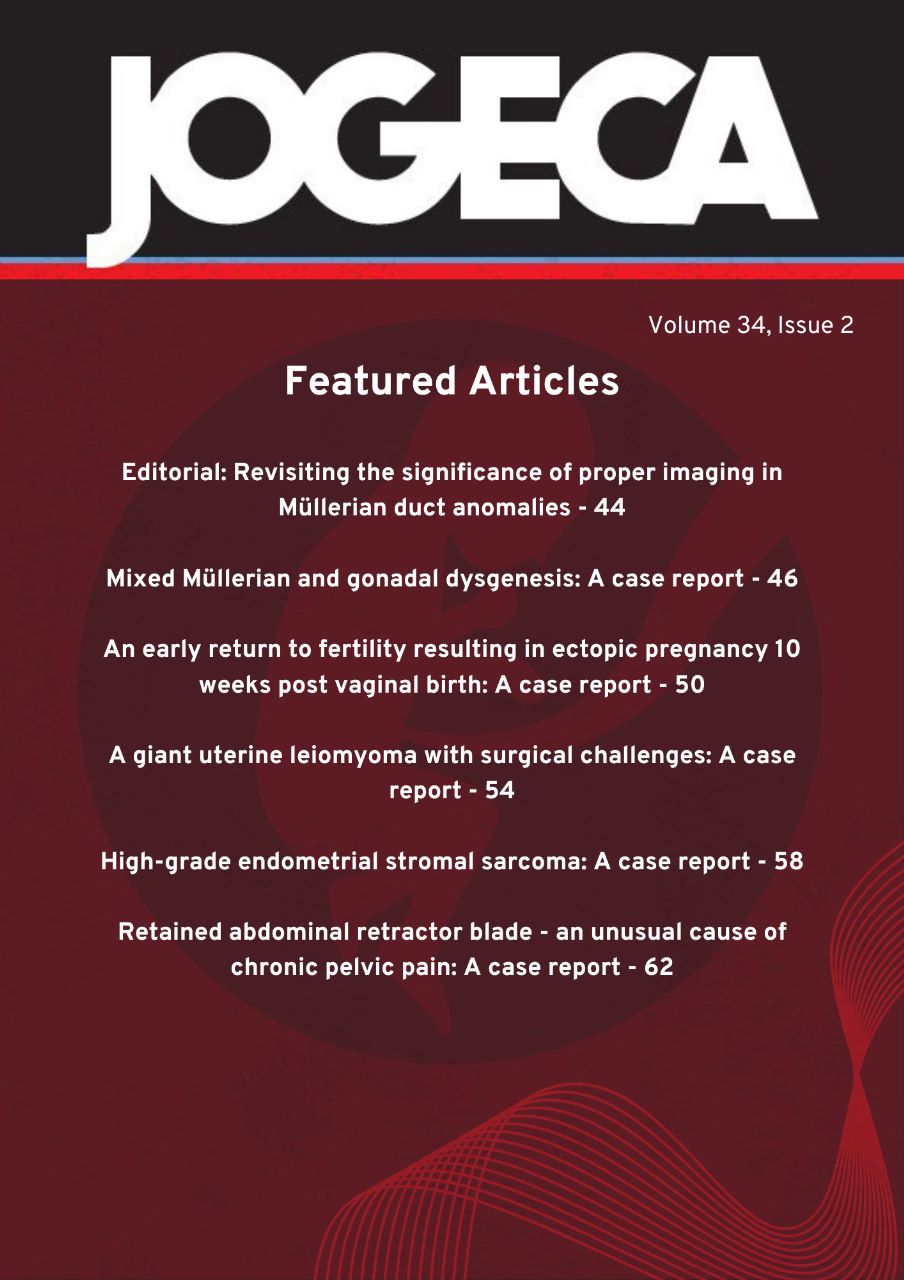Randomized trial of early detection and treatment of postpartum hemorrhage
DOI:
https://doi.org/10.59692/jogeca.v36i1.149Abstract
Background: Delays in the detection or treatment of postpartum hemorrhage can result in complications or death. A blood-collection drape can help provide objective, accurate, and early diagnosis of postpartum hemorrhage, and delayed or inconsistent use of effective interventions may be addressed by a treatment bundle.
Methods: We conducted an international, cluster-randomized trial to assess a multicomponent clinical intervention for postpartum hemorrhage in vaginal delivery patients. The intervention included a calibrated blood-collection drape for the early detection of postpartum hemorrhage and a bundle of first-response treatments (uterine massage, oxytocic drugs, tranexamic acid, intravenous fluids, examination, and escalation), supported by an implementation strategy (intervention group). Hospitals in the control group provided usual care. The primary outcome was a composite of severe postpartum hemorrhage (blood loss, ≥1000 ml), laparotomy for bleeding, or maternal death from bleeding. The key secondary implementation outcomes were the detection of postpartum hemorrhage and adherence to the treatment bundle.
Results: 80 secondary-level hospitals across Kenya, Nigeria, South Africa, and Tanzania, in which 210,132 patients underwent vaginal delivery, were randomly assigned to the intervention group or the usual-care group. Among hospitals and patients with data, a primary outcome event occurred in 1.6% of the patients in the intervention group compared with 4.3% of those in the usual-care group (risk ratio, 0.40; 95% confidence interval [CI], 0.32-0.50; P<0.001). Postpartum hemorrhage was detected in 93.1% of the patients in the intervention group and 51.1% of those in the usual-care group (rate ratio, 1.58; 95% CI, 1.41-1.76), and the treatment bundle was used in 91.2% and 19.4% patients, respectively (rate ratio, 4.94; 95% CI, 3.88-6.28).
Conclusion: Early detection of postpartum hemorrhage and use of bundled treatment led to a lower risk of the primary outcome, a composite of severe postpartum hemorrhage, laparotomy for bleeding, or death from bleeding, than usual care among patients having vaginal delivery.
(Funded by the Bill and Melinda Gates Foundation; E-MOTIVE ClinicalTrials.gov number, NCT04341662).
Downloads
Published
How to Cite
Issue
Section
Categories
License
Copyright (c) 2024 The Authors.

This work is licensed under a Creative Commons Attribution 4.0 International License.




